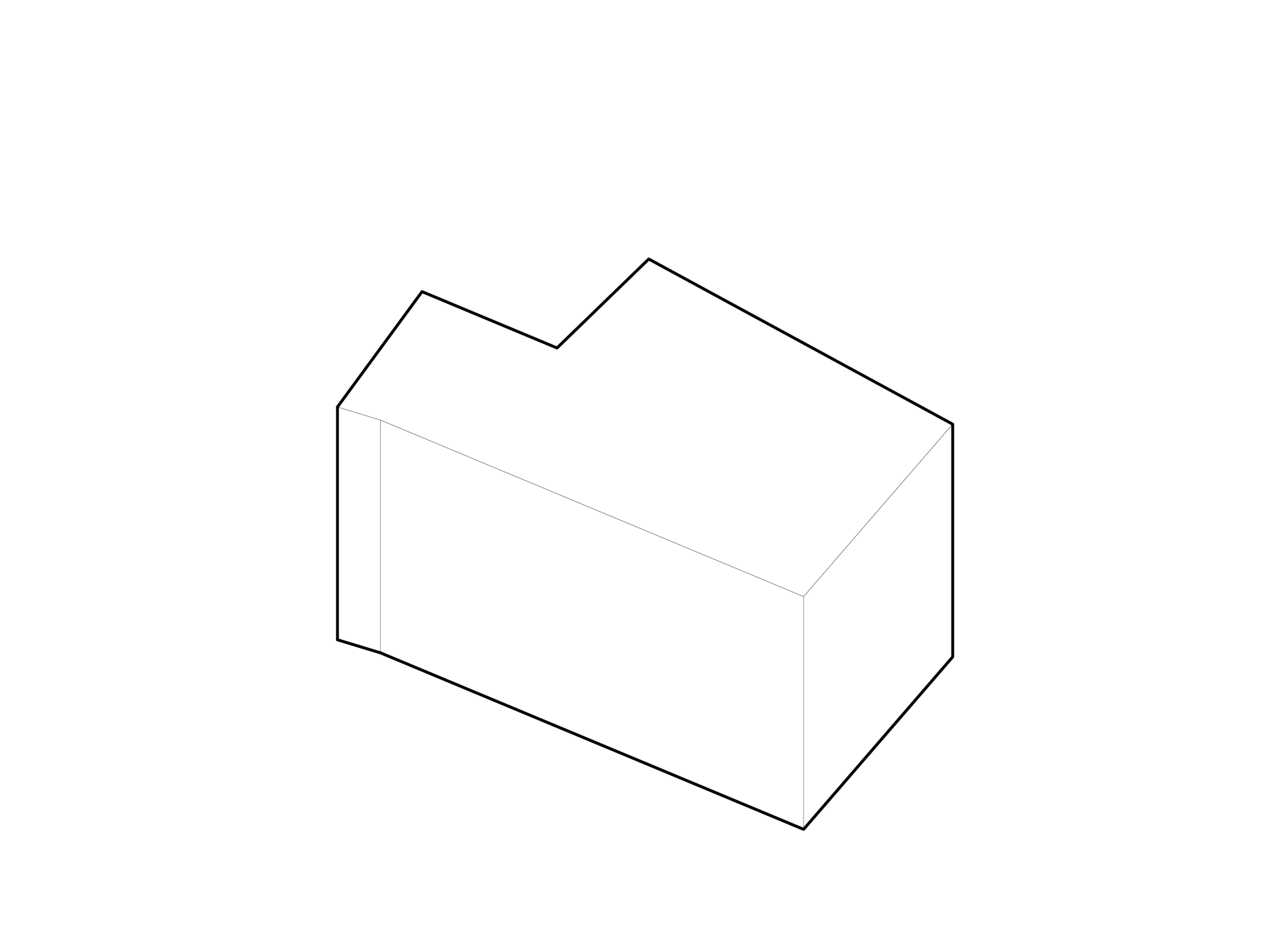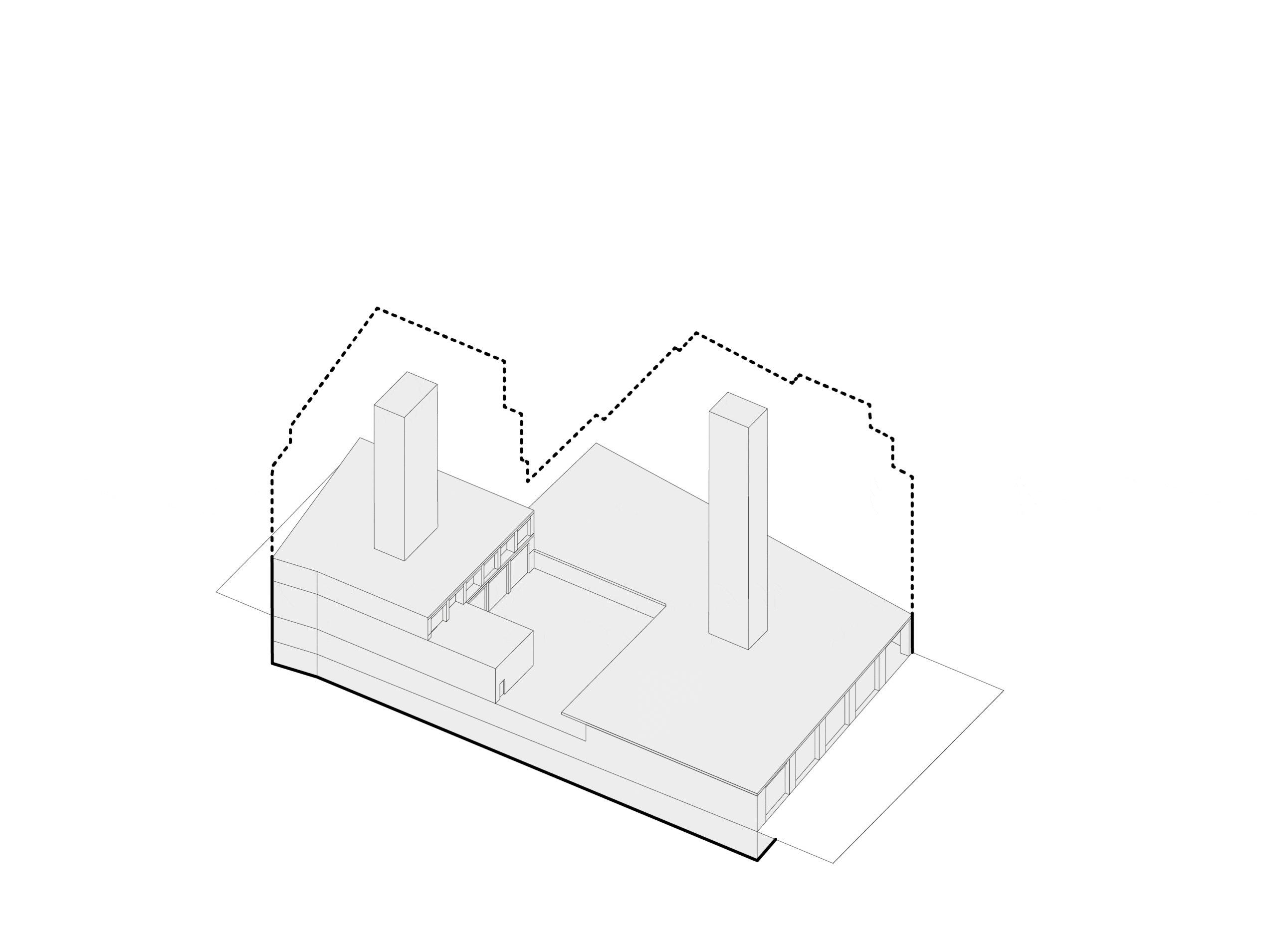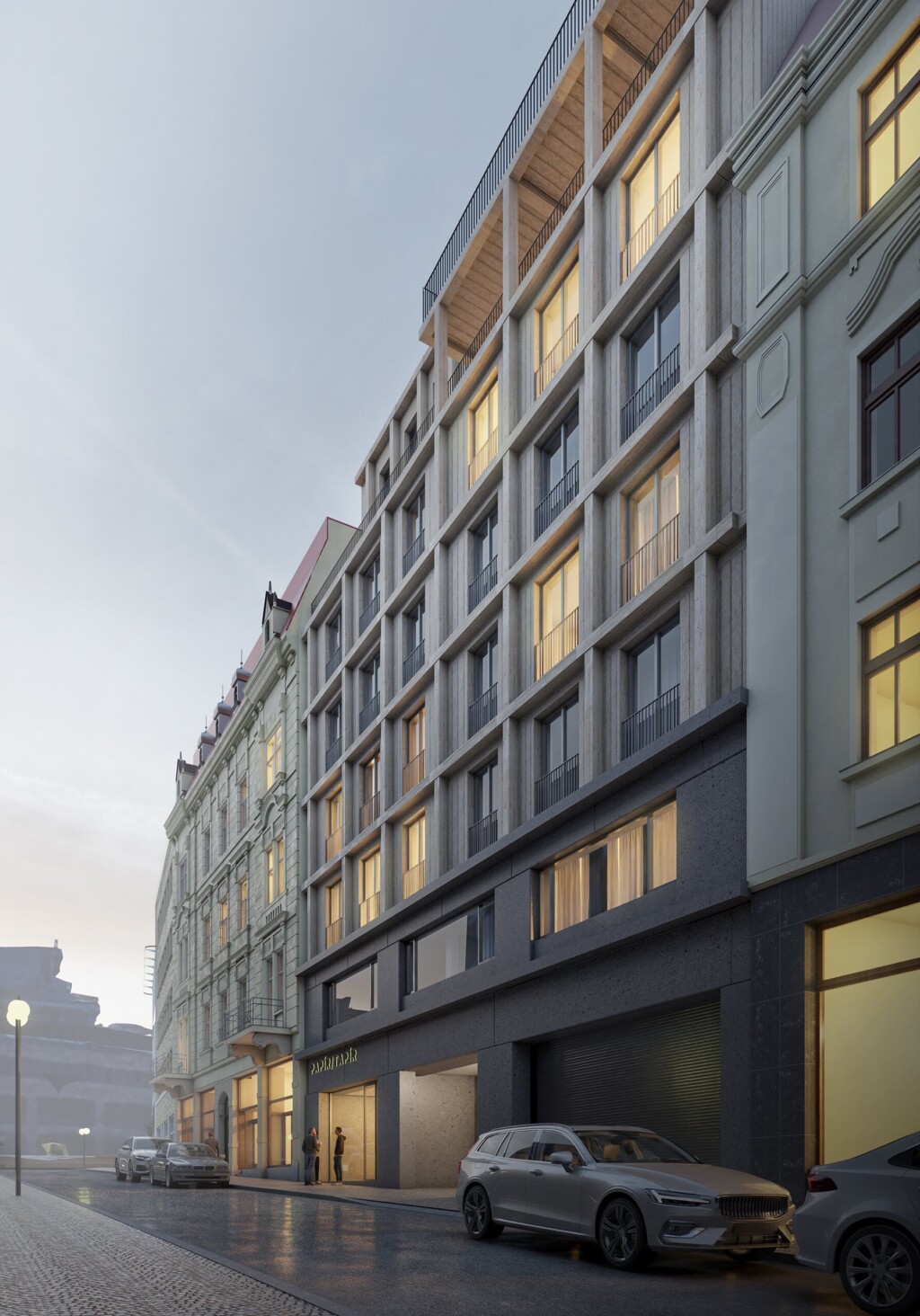In place of the original buildings, we have designed two apartment buildings connected by an underground parking lot. The basement structures, ground floor and vertical communication cores are made of reinforced concrete, while the remaining structures are made of CLT panels. We intend to implement most of the building using the spatial prefabricated units method, commonly referred to as containers, which will be assembled and equipped to the maximum extent at the workshop. In practice, this means that the individual parts of the flats will be equipped with wiring, end fixtures and finishes. For example, the living room will arrive on site with light fittings, switches and sockets, the kitchen with tap and sink, partitions, bathroom with tiles, toilet and shower. The crane sets the container in its place in the framework and the only work on site is the joining and finishing. The module is limited by the space it can be transported in - it has to fit on the back of a truck. At the same time, the basic modularity gives us the freedom to merge or divide the layout of the flats.












